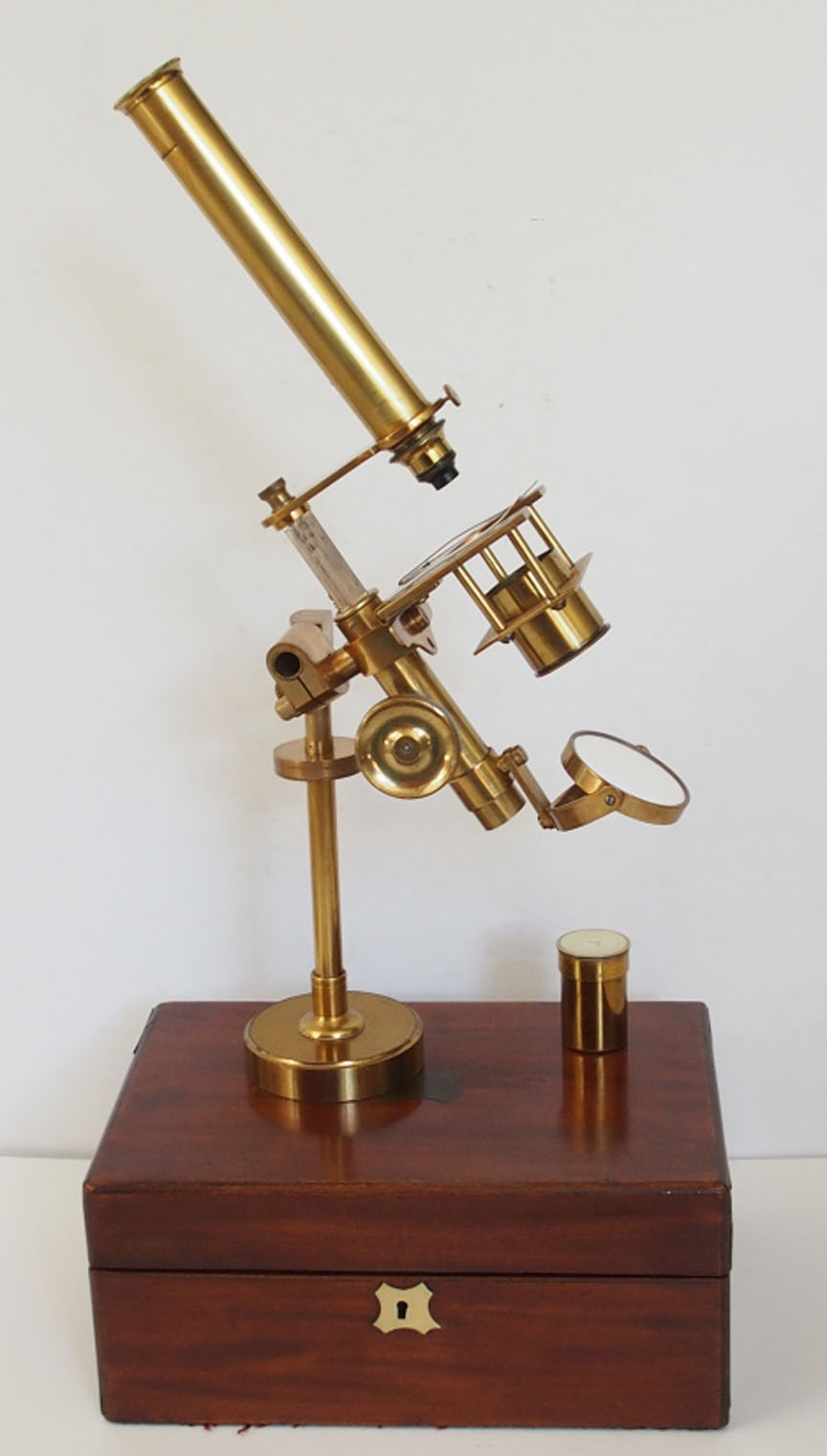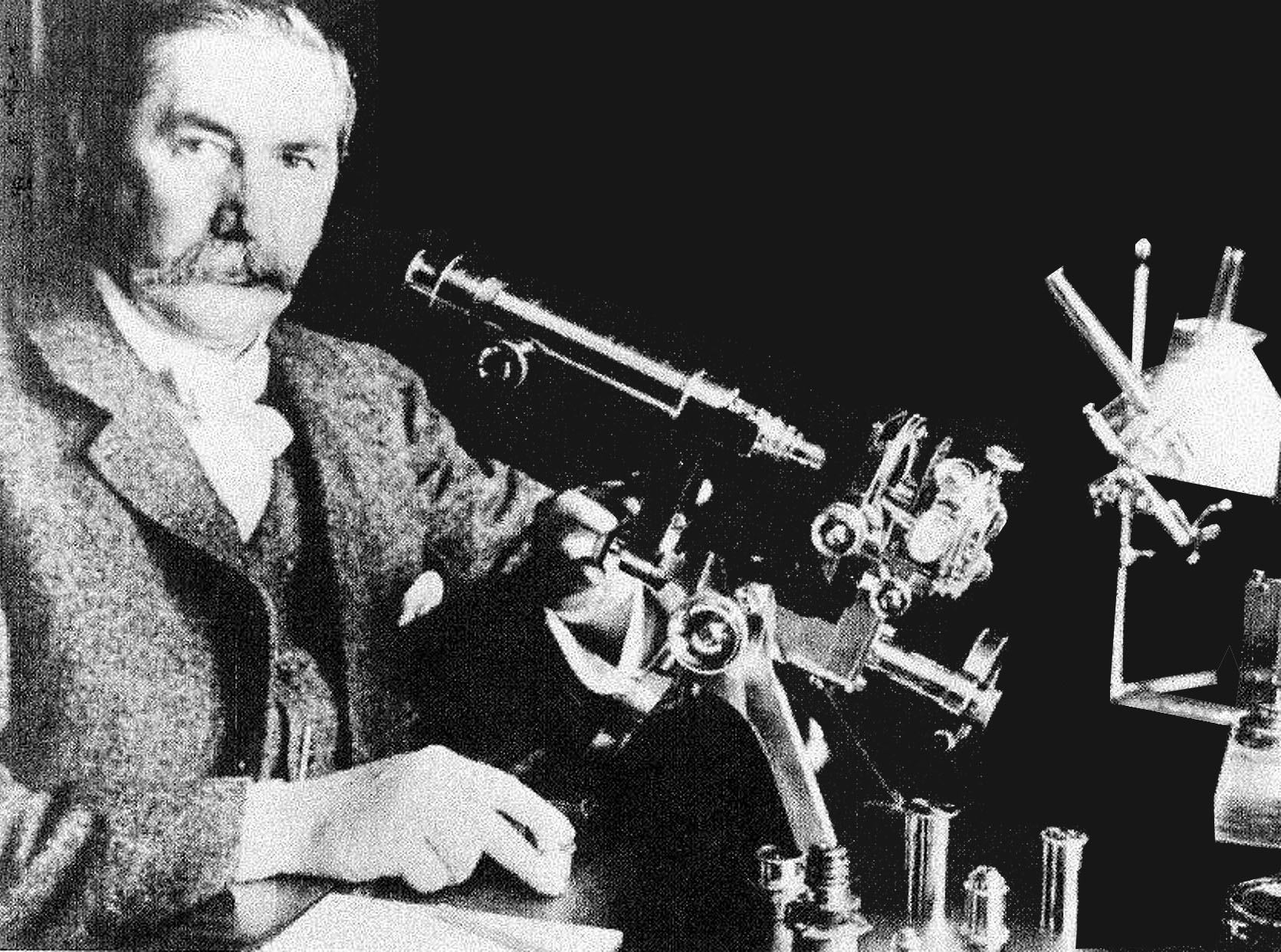| DESCRIPTION | HISTORY |
Please Click On Any Picture for a Larger Version
 As per the JRMS:
As per the JRMS:Nelson's portable microscope.-Mr. E. M. Nelson exhibited at the November meeting of the society, a new portable microscope (figures 238 and 239), made by Messrs. Powell & Lealand from his drawings.
The instrument is adapted for 3 different modes of use, viz:-(1) as a small table microscope for home use (a very useful adjunct to a large instrument); (2) as a portable microscope for the exhibition of objects at society's etc. (figure 238); (3) as a field microscope and (4) as a class demonstration instrument (figure 239). The instrument has 2 objectives, a 4/10 inch and a 1 inch, which with the two eyepieces, give the following powers:–35, 70, 100, 200. The 4/10th is of 0.65 N.A. The highest power, therefore is equivalent to a 1/2 inch of 80° with an C eyepiece or a one quarter of 80° with an A eyepiece on in ordinary full-sized English microscope. The lowest eyepiece is on the Abbe compensating principal.
In the mechanical portion of the instrument of several new features. The design of the microscope is that which is generally known as the bar movement. It has a rack and pinion coarse adjustment, and no fine adjustment, thereby following the dictum of the great master, (the late Hugh Powell), who said 'in an elementary microscope a good coarse adjustment without any fine, is better than one with a second rate fine, and no coarse adjustment.' The truth of this statement is daily verified in the shaky condition of the fine adjustments of student microscopes which are fitted with a direct acting screw fine adjustment and a sliding-tube coarse adjustment. The body of the microscope is 3 inches long. The stage is of Mr. Nelson's horseshoe pattern and the spring clips are those of Mr. Hugh Powell. Although strongly opposed to all kinds of clips, Mr. Nelson found they were necessary in this instance to permit the complete inversion of the instrument. The great difference between these clips and those of the usual form that the is that these, being fixed underneath the stage, allow a smoothness of action to the slip which is totally foreign to the others.
To the underneath side of the status is fixed the substage which carries an achromatic condenser, focusing by means of a sliding tube. This stage and substage rotate on an axis, so that they may be turned into the plane of the trunk for packing.
There is a plane mirrow mounted in on a crank arm. The foot is circular, rests on 3 points and has an upright rod capable of extension like a bull's-eye stand On the top of the upright there is a short horizontal arm to which the microscope is attached. For portable and exhibition purposes the instrument fits onto the microscope lamp stand the same apparatus being used to attach it is in the first case (figure 238).
When the microscope is required for field or class purposes this attaching piece is taken off and is replaced by a handle (figure 239). The handle and the attaching piece are so arranged that the microscope cannot shake loose or twist off or get off the Square. When the instrument is used in the field, the mirror is swollen to one side and the condenser is pointed to the sky.
 Above is a picture of E.M. Nelson with his Powell & Lealand microscopes including the Jubilee model.
As noted, the Jubilee portable and demonstration microscope was first reported in the JRMS of late 1887. There are at least two examples of the original P & L portable known to us. One is in the Science Museum in London and dated 1889, donated by T.H. Court. The other, dated 1887, is in the RMS collection, and was given by Nelson himself to Elliot Merlin who left it to the RMS upon his death.
Above is a picture of E.M. Nelson with his Powell & Lealand microscopes including the Jubilee model.
As noted, the Jubilee portable and demonstration microscope was first reported in the JRMS of late 1887. There are at least two examples of the original P & L portable known to us. One is in the Science Museum in London and dated 1889, donated by T.H. Court. The other, dated 1887, is in the RMS collection, and was given by Nelson himself to Elliot Merlin who left it to the RMS upon his death.